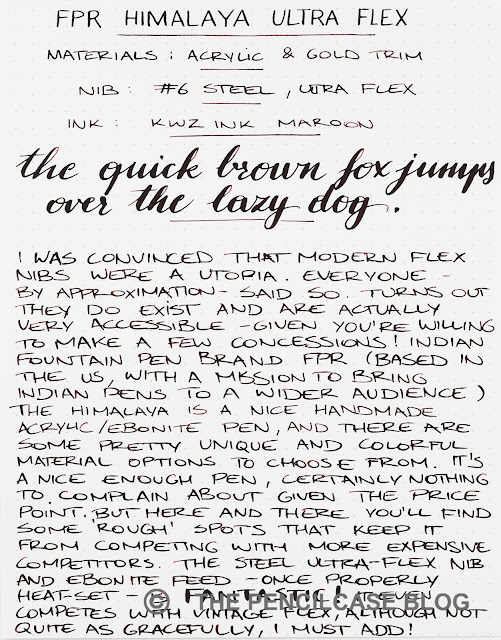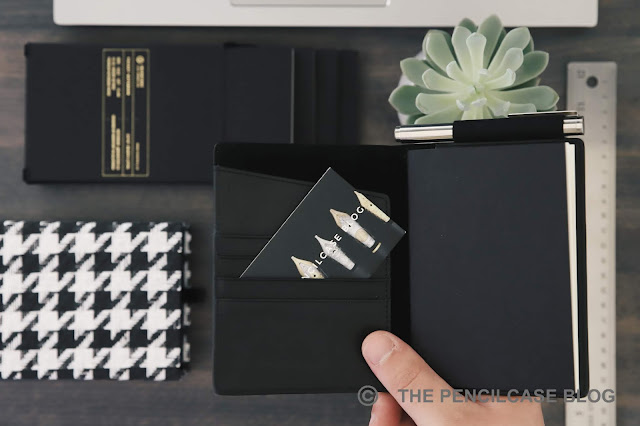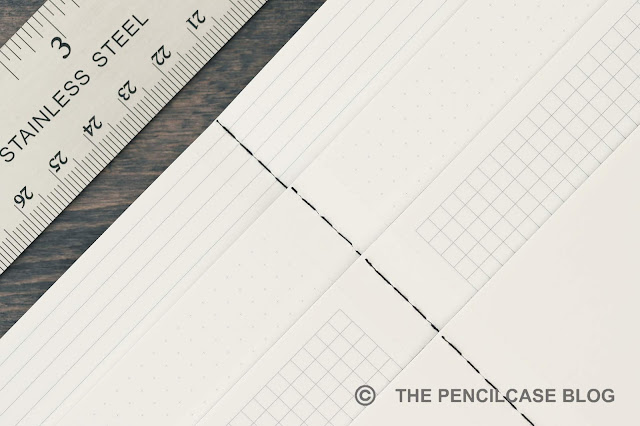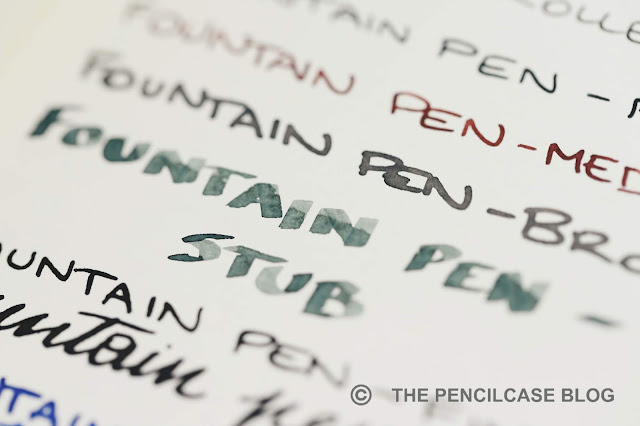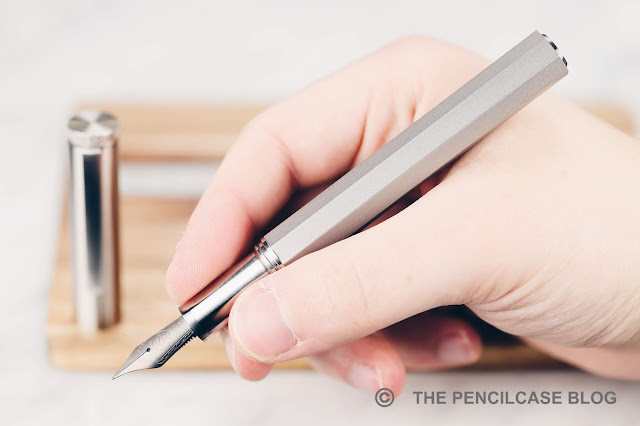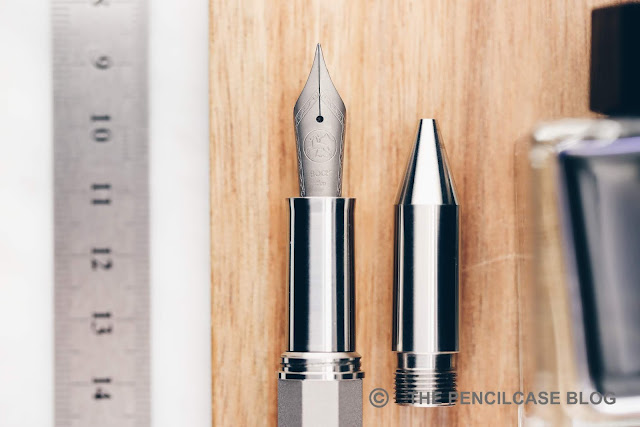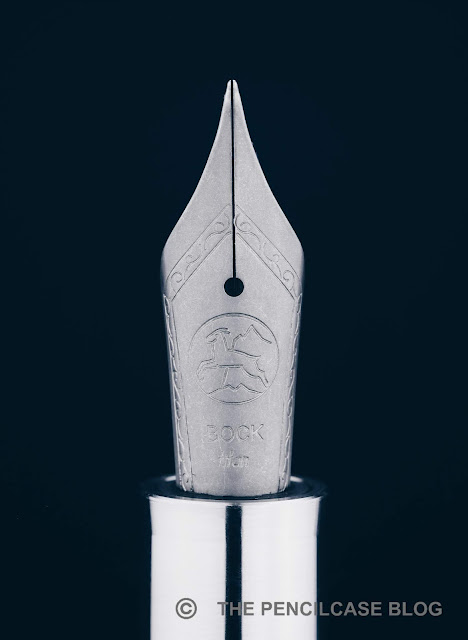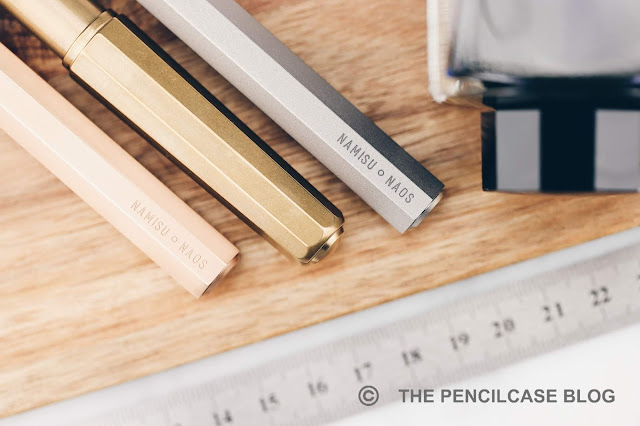
In my - possibly neverending - search for the best possible modern flex nib, we've arrived at a very cool pen from Pilot that I've been wanting to try out for a very long time: the Pilot Custom 743. The only thing standing in my way up until this point has been Pilot Europe's ongoing ignorance (or restrictions from higher up?) of their luxury writing branch, leaving European vendors behind empty-handed on a lot of awesome products.
Early this year - about 3 years too late, mind you - the Pilot 823, 845 urushi and Custom urushi FINALLY made it over to the European market. While an improvement for sure, we're still eagerly waiting for the rest of Pilot's offerings (the Custom 912 or 743, for example) especially with Pilot's exquisite specialty nibs like the Waverly (WA), Posting (PO), Stub (SU), or the nib I'll be showing today: the Falcon (FA)!
Early this year - about 3 years too late, mind you - the Pilot 823, 845 urushi and Custom urushi FINALLY made it over to the European market. While an improvement for sure, we're still eagerly waiting for the rest of Pilot's offerings (the Custom 912 or 743, for example) especially with Pilot's exquisite specialty nibs like the Waverly (WA), Posting (PO), Stub (SU), or the nib I'll be showing today: the Falcon (FA)!
Because chances of getting the Custom 743 here in Europe are slim for the time being, I instead sourced it from a Japan-based retailer. The only problem - as some of you will know - is that most Japanese web stores can be really difficult to navigate, even with help from Google Translate. So, luckily, I found out about PenSachi! With their English website (and English-speaking staff), PenSachi aims to make hard-to-get special and limited editions from Sailor, Platinum, and Pilot more readily available for customers outside Japan. My thanks to them for helping me get my hands on a 743 for this review!
 |
| Pilot Custom 743 (bottom) and 823 (top) |
The Custom 743 leans very close to the Custom 823 (that I reviewed a few years ago), especially in terms of the overall design. But there are some key differences as well, particularly on the inside!
I'd categorize the 743 as a 'business'-style design, fitting right in with the rest of Pilot's rather understated Custom and Custom Heritage pens. A no-frills, black+gold pen that doesn't try to stand out between analogs like the Montblanc Meisterstück, Sailor 1911 or Platinum Century 3776. If anything, I find that the design appears a bit more streamlined and retro than its competitors - probably due to Pilot's typical ball end clip.
 |
| Enamel-filled letters on the center band complete the low-key appearance of the 743 |
 |
| Pilot Custom 743 (bottom) and 823 (top) |
I think there's something to be said for the simplicity of the Custom 743. On the outside, it's an elegant and slender cigar-shaped pen in black resin, detailed with plenty of gold trim without looking gaudy. The 743 and 823 are identical except for the semi-translucent resin of the 823 (although the smoke grey 823 appears almost black in person) and a slightly longer, more tapered barrel finial on the 823 which is actually the blind cap for the vacuum filling mechanism, as opposed to just an aesthetic detail on the 743.

The vacuum filling system of the 823 is an excellent choice when you absolutely want/need a high ink capacity (2.5 mL) for daily use. But the 743's con-70 converter is not at all a bad alternative, with more than adequate capacity (about 1 mL, almost twice as much as a standard international converter), and a practical pump filling system. Another way to look at it is this: with the 823 you have to stick to one ink for a considerable time, the 743 gives you the ability to change inks a bit more frequently.
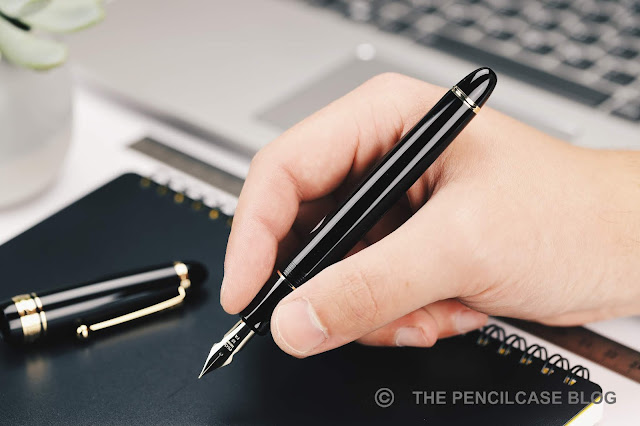
 |
| L to R: Pelikan M805, Platinum Century 3776, Pilot Justus 95, Pilot Custom 823, Pilot Custom 743, Lamy 2000, Lamy Safari |
The Pilot Custom 743 is a large pen that doesn't feel large. It's light (26 g total) and nimble in the hand, and about a fraction slimmer than a Pelikan M800. Those things, combined with the excellent grip shape and unobtrusive threads, make for an excellent pen to use. In terms of length (14.8 cm/ 5.8" capped, 13.1 cm/ 5.16" uncapped), it's a touch longer than a Montblanc 149, making it ideal even for people with larger hands (unless you have a strong preference for girthier pens). Comfort-wise, it's hard to knock these pens.
 |
| FA nib on the 743 (left), medium nib on the 823 (right) |
We've finally come to the ACTUAL reason why you'd choose the 743 over the 823: the nib! Both use Pilot's 14k gold, #15-size nib (same size as a #6 nib from other brands), but as I already mentioned, the 743 gets a few more interesting options than the 823, in this case the flexible Falcon (FA) nib. Confusingly, it's not the same as Pilot's similarly named Falcon fountain pen. Whereas the Pilot Falcon PEN has a nib that's best described as springy and soft, the FA NIB on the 743 comes closer to a true modern flex nib.
The FA certainly has the design cues of a flex nib: a slender profile with long and strongly tapered tines, cutouts on the side, and very minimal branding on the nib face (I was told once that the less intricate stamping is done to prevent structural weak points, which is of course very important on a flexible nib!). It may look a bit bland in comparison to the regular scrollwork on Pilot's nibs, but that's a trade-off I'm willing to make for a flexible writing experience.
The FA certainly has the design cues of a flex nib: a slender profile with long and strongly tapered tines, cutouts on the side, and very minimal branding on the nib face (I was told once that the less intricate stamping is done to prevent structural weak points, which is of course very important on a flexible nib!). It may look a bit bland in comparison to the regular scrollwork on Pilot's nibs, but that's a trade-off I'm willing to make for a flexible writing experience.

The FA nib is definitely suitable for everyday use, provide you don't have a heavy hand. With normal writing pressure, the nib is just stiff enough to still provide a pretty comfortable writing experience. The EF-F tipping provides a noticeable (and audible) amount of feedback while writing.
Looking at the FA purely for flex writing, it does come with a little side note: since it's a Japanese-made nib, it's designed for the short brush-like strokes of Japanese calligraphy, not really for Western writing styles. Continuously flexing the nib will make it railroad because the feed isn't designed to keep up.
If you take it slowly though, this nib is pleasantly springy and responsive and produces excellent results as far as line variation goes. The tines open up quite easily to a little over 1mm, or 1.3mm when pushed to the limit. It's probably worth suggesting, given that this is not a cheap pen like a Noodler's or the FPR Himalaya I reviewed last week, I'd probably suggest not pushing the nib to the limit (never a great idea). Still, variation from EF to BB is nothing to be scoffed at. Because it starts off as a rather fine line, that's more than enough variation to give a dramatic effect to your writing.

Looking at the FA purely for flex writing, it does come with a little side note: since it's a Japanese-made nib, it's designed for the short brush-like strokes of Japanese calligraphy, not really for Western writing styles. Continuously flexing the nib will make it railroad because the feed isn't designed to keep up.
If you take it slowly though, this nib is pleasantly springy and responsive and produces excellent results as far as line variation goes. The tines open up quite easily to a little over 1mm, or 1.3mm when pushed to the limit. It's probably worth suggesting, given that this is not a cheap pen like a Noodler's or the FPR Himalaya I reviewed last week, I'd probably suggest not pushing the nib to the limit (never a great idea). Still, variation from EF to BB is nothing to be scoffed at. Because it starts off as a rather fine line, that's more than enough variation to give a dramatic effect to your writing.

I'm generally not one to make a case for matching pen and ink of the same manufacturer. However, with some Pilot pens, like this one, I've noticed slight improvements sticking with Iroshizuku inks (I haven't really systematically tested this theory though, so your mileage may vary!). I wrote this review with Pelikan Edelstein Onyx (generally a good performing ink for flex nibs), but there were some occasional skips on downstrokes and as expected the feed starved after writing a few words with heavy flexing (pushing the limits of the nib, mind you). Switching to Iroshizuku Tsuki-Yo made a noticeable improvement. Even with fast flex writing, the feed seemed to recover faster from getting starved (It will still railroad periodically, but the flow immediately picks up again), and the nib no longer skipped.

The Pilot 743, just like the 823, manages to impress in so many ways. The no-frills, workhorse design means serious business, and under the hood, it packs some serious performance. The FA nib adds a bit of playfulness to the mix. It's an excellent option to get your hands on modern flex: a pleasantly soft and responsive flex nib, that gives plenty of line variation.
Given that the 743 and 823 are identical in design and price - both retail for 265$ at PenSachi - deciding between the two will boil down to choosing either a high-capacity filling system or one of Pilot's many interesting specialty nibs, you can't have both. Either way, you're getting a lot of pen for essentially (less than) half the price of a Pelikan M800 or Montblanc 146!
Note: PenSachi provided this product at a discount, so I could write this review. I was in no way influenced in the making of this review, the opinions shared in this review are completely my own! This post does not contain affiliate links.






















